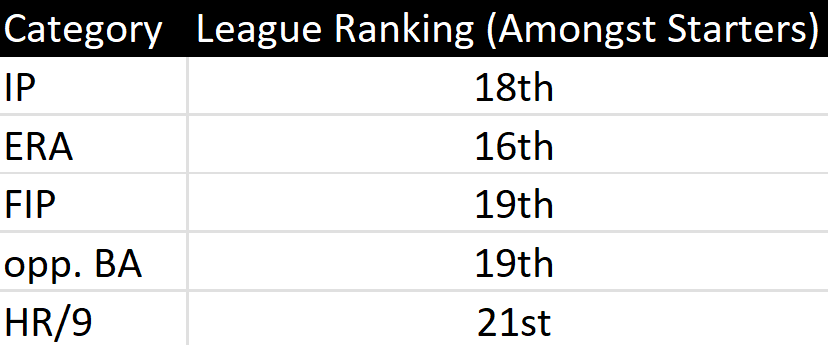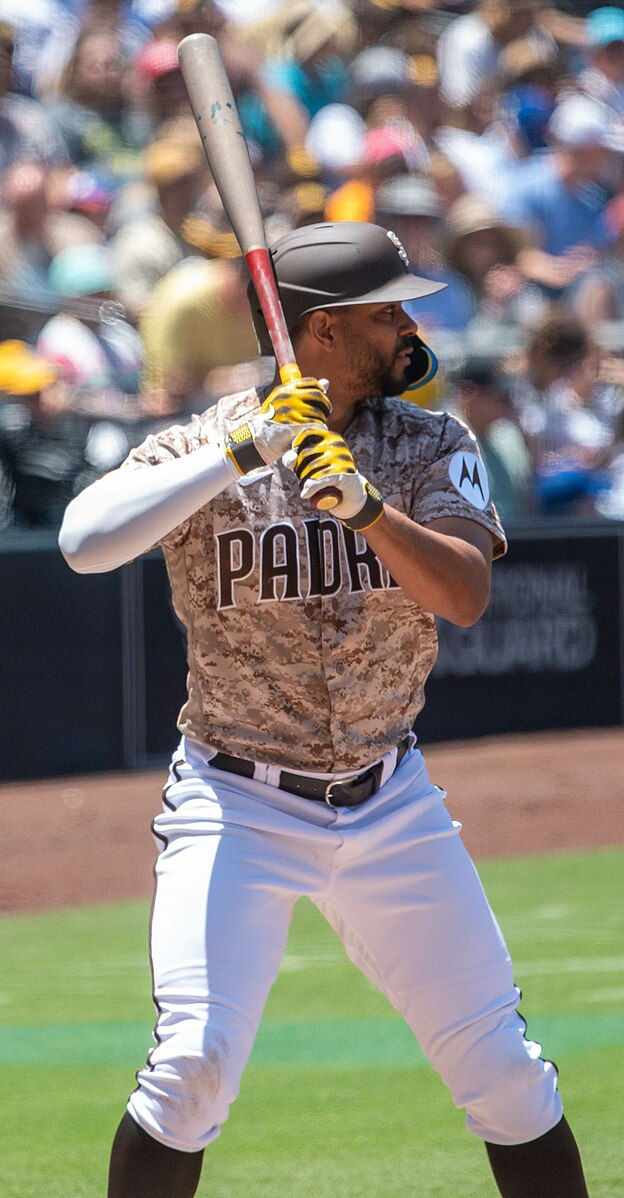First-Time Buyers: What the Addition of Jack Flaherty Means for the O's
- Kane Schwarz

- Aug 4, 2023
- 6 min read

For the first time in Mike Elias’ tenure as General Manager of the Orioles, he made the move to buy at the trade deadline. The club is in a great spot as we roll into August, sitting atop the AL East, baseball’s most competitive division, with a 66-42 record. Baltimore’s potent offense has kept them playing at an elite level, but to carry success into the postseason, it was clear they needed to upgrade their starting pitching. The call-up of #1 pitching prospect Grayson Rodriguez early on did not go as planned, so the O’s have had to rely on a rotating carousel of streaky performances from the rest of the pitching staff. With a serious lack of starter options beyond the major league roster, the front office pulled the trigger on a trade to acquire the Cardinals’ 27-year-old RHP Jack Flaherty with less than 10 minutes to go before the trade deadline on Tuesday.
After being taken by St. Louis in the 1st round of the 2014 draft, expectations were sky-high. Some Cardinals fans brought themselves to mention Bob Gibson in the same breath as Flaherty. Despite finishing 4th in Cy Young voting back in 2019, he never quite lived up to the hype with the Cards. Now he gets a change of scenery and a chance for a deep run into the postseason as a rental in Baltimore (barring an offseason extension). What exactly does Jack Flaherty bring to this Orioles pitching staff?
One of the biggest concerns for this Orioles' pitching staff is the lack of consistency. The team has had a different #1 starter on a month-to-month basis throughout the season. The starting pitchers’ splits by month tell much of the same story.

Throughout March and April, it was clear that former rule-5 pick Tyler Wells was the best-performing starter in the rotation. Out of the 13 categories taken into consideration, Wells outranked his teammates in more than half of them at the end of April. His impressive 0.72 WHIP was the best in baseball among starting pitchers up to that point. Not far behind was his 0.93 BB/9, which was the third-best for a starting pitcher at the time. Wells managed to carry a lot of his success into the month of May and even improved his K/9 from 7.08 to 10.06, and Dean Kremer also stepped up in a big way. Despite the lackluster H/9, Kremer managed to get himself out of jams throughout the month and limited the home run ball, unlike Wells. Kremer’s ERA, FIP, and fWAR outranked the rest of the rotation for the month as he proved to be the most reliable starter in May.
Throughout the first two months of the season, the Grayson Rodriguez experiment was not going as planned. An abysmal 11.14 ERA and 2.14 WHIP in the month of May led to a demotion to the minors. This meant that the O’s needed yet another guy to step up in the rotation as the dog days of summer approached.

Tyler Wells continued to put up solid numbers in the month of June, claiming a rotational best ERA, opp. BA, K/9, H/9, BABIP, and WHIP. However, Dean Kremer failed to carry over his momentum from May. He went from being an automatic quality start to the last option in the rotation, posting a negative fWAR in June and allowing a team-high 6.05 FIP and 2.81 HR/9. As Kremer fell off, however, second-year starter Kyle Bradish continued to rise. There’s an argument to be made that he was the best O’s starter in June, posting the top fWAR, HR/9, FIP, and xFIP for the month. A team-best ERA, BB/9, K/BB, and WHIP in the month of July solidified Bradish as Baltimore’s top starting pitching option. On the other hand, after putting up a great first half of the season, Tyler Wells fell off a cliff in the month of July. Wells was the only Orioles starter to finish the month with a negative fWAR and finished last in every one of the above metrics besides BABIP. Wells struggled so much in July that rumors swirled the O’s could send him to the bullpen or move on altogether.
That is the state of the Orioles’ rotation. From Wells to Kremer to Bradish, the Orioles have had to play to the streakiness of their rotation to find a #1 starter. Without looking at the numbers, some would say veteran Kyle Gibson has been the face of this rotation this year, coming up big in high-leverage starts. After improving leaps and bounds since returning from AAA, you could even make the argument Grayson Rodriguez could be the top-of-the-rotation starter come the postseason.
Now, enter newly-added starter Jack Flaherty. In comparison to the rest of his career, Flaherty has put up less-than-stellar numbers this season. However, given his pedigree, talent, and the change of scenery, he easily has the best chance to be this team’s starter in game one of the first postseason series. Flaherty is the only pitcher amongst the rest of the rotation to be a Cy Young finalist and offers a level of consistency that this rotation has lacked. Let’s take a look at where this staff has struggled specifically and how Flaherty fits in.


At first glance, Flaherty slides into the middle of the rotation with how he’s been performing this season. Similar to the stories of other teams without reliable starting pitching, the O’s starters have struggled to keep down their collective FIP, as they sit at 19th in the league among starting rotations. Despite pushing the left field wall back in a hitter-friendly Camden Yards just a season ago, the staff has been susceptible to the home run ball. They finished July among the bottom 10 teams in HR/9. The categories listed above cast a grim shadow upon Baltimore’s rotation, but the acquisition of Flaherty should help.


The two time series charts above show that Jack Flaherty has been able to keep down both his FIP and HR/9 with the likes of Kyle Gibson and Kyle Bradish. Flaherty has managed to keep the ball in the ballpark. Additionally, his 4.24 FIP isn’t far off from this year’s league average at 3.87, which means he’s also been generating strikeouts while limiting free passes like walks and HBPs. While Dean Kremer and Tyler Wells have seen significant changes month-to-month despite being top of the rotation options at times, Flaherty has been able to maintain a level of consistency throughout the season in both categories. Reliability is crucial when it comes to late-season starting pitching, and it seems the O’s can depend on Flaherty to limit the long ball and free passes.
Flaherty ranks similarly to or worse than the rest of Baltimore’s rotations in other areas like innings pitched, earned run average, and opponent batting average. However, pitching analysts talk all the time about second-half surges, and Flaherty has been trending toward one after an impressive July.



Throughout March and April, Flaherty pitched deep into games while keeping batting averages down and limiting earned runs, rivaling Tyler Wells’ impressive stretch during that time. Unfortunately, rough months in May and June caused his season-long numbers to take a dip. The Cardinals’ entire pitching staff struggled throughout May and June, finishing the stretch at 19th in ERA and 29th in opp. BA. Flaherty’s struggles could partially be attributed to failed coaching and the borderline hopeless environment the Cardinals have been immersed in all season. Despite those two months, Flaherty proved in July that he could turn it around. His opponent batting average came down, his innings pitched went up, and his ERA has been trending downward since the end of May, ranking better than every Orioles starter not named Kyle Bradish for the month of July. If things continue to trend in the right direction for Flaherty, he could be Baltimore’s ace come October.
As of this writing, Jack Flaherty made his first start Thursday for Baltimore against the Blue Jays in Toronto. After allowing a hit and a walk against the first two men he faced, he proceeded to retire 15 consecutive batters. Flaherty posted a final line of 6.0 IP, 4 H, 1 ER, 2 BB, and an impressive 8 Ks. His chemistry with Adley Rutschman behind the plate was on full display, and the O’s offense was able to put up 6 runs of support to give Flaherty his 7th win on the year. The Orioles' offense will continue to produce, but if the starting pitching can put up more performances like Flaherty’s maiden voyage in an Orioles uniform, this team has legitimate World Series aspirations. Mike Elias picked the perfect buy for his team at this year’s deadline in the form of Jack Flaherty.
"Jack Flaherty 9.22.22" via Ryan Casey Aguinaldo licensed under CC BY-SA 4.0




Comments